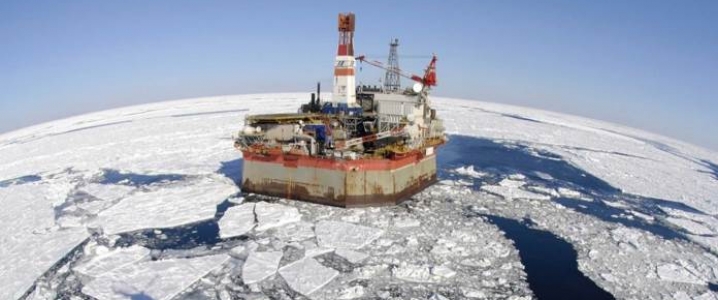Energy dominance is a term that has become almost synonymous with Trump’s administration. On the face of things, it may seem that the term requires no further analysis for a deeper understanding - surely it is simply as it sounds; the ability to dominate the energy market. But Trump’s tweet this morning calls that understanding into question.

(Click to enlarge)
It isn’t unfeasible to suppose that the word ‘jobs’ is there as an attempt to answer any detractors to the policy, but security is another matter entirely. It seems energy dominance isn’t simply about energy independence, but rather about political and economic clout.
John McCarrick, the deputy assistant secretary at the State Department’s Bureau of Energy Resources has talked about the Asian energy markets, specifically China, painting the U.S.’ policy of dominance as a means to equalling trade imbalances and “level the market playing field”. Yet it is Europe - a market over which Russia has something of a stranglehold where things get much more interesting. It is here that U.S. energy exports seem to be a direct challenge to Russia’s heavy-handed tactics. Indeed, Trump's own wording cites the policy as a means to “help [its] allies and partners become more resilient against those that use energy to coerce.” Related: U.S. Oil Export Boom Boosts Pipeline Demand
It seems then, that the thirst for oil as a means for satiating oil companies’ profits is in complete accord with government policy, and that the current shale oil boom is the result of a cycle that feeds and replenishes both parties. IEA forecasts that put U.S. oil production above Russia’s in the not too distant future may yet be mere hyperbole, so it may indeed be prudent to bolster those forecasts by securing more reliable sources of oil.
Perhaps in anticipation of this very policy, the Obama administration attempted to preemptively block it with an executive order that aimed to protect huge portions of the Arctic and Atlantic Oceans from oil and gas exploitation. While at the time it may have seemed to some a foolproof way of safeguarding these areas indefinitely, last month Trump put paid to that idea when his administration unveiled a plan that would permit drilling of the Outer Continental Shelf (OCS).
While certainly still a long way from actual drilling, the plan has opened the floodgates of oil exploration, and generated ire form many parties, including businesses that rely on tourism and environmental groups. Though this idea may not be surprising, the plan is also at risk of pitting the administration against more than half of the states that stand to directly be affected by it. Of those 20 states, 12 have expressed clear opposition, while 6 have fully endorsed it. One other state has endorsed it, providing that all relevant environmental and societal issues are fully addressed. The rest have either not stated a position or simply not responded.
There are certainly some that believe public and private backlash will kill off this proposal before it comes to fruition. Others may argue that drilling companies will treat this as a hot potato, preferring to keep well away from anything that had BP reeling after the Deepwater Horizon disaster in 2010, which has purportedly cost them $61.6 billion. Many more may argue that the protections put in place after that disaster simply make such an undertaking too risky.
Related: IEA Predicts Nightmare Scenario For OPEC
The problem with the latter position is that the administration already has an answer for it. The Interior Department’s Bureau of Safety and Environmental Enforcement has stated it plans to “reduc[e] the regulatory burden on industry.” In other words, repeal the regulations that were implemented to ensure disasters like Deepwater Horizon never happen again.
It seems that any expectation that drilling companies will stay away is indeed unfounded, with 9 industry associations and the same number of companies showing interest in all of the proposed sites. Surely then there is some money to be made, but with a lack of pacific infrastructure currently in place, perhaps this interest is more about those companies and associations protecting their longevity rather than tapping viable resources.
The real question is whether such a move has any relevance in a world that is shifting further and further away from fossil fuels, and whether it can stand up to such stiff opposition.
By Gary Norman for Oilprice.com
More Top Reads From Oilprice.com:
- 44 Things You Didn’t Know About Oil
- The Only Oil Major Not Buying Into The Permian
- Rick Perry: U.S. Should Ramp Up Oil, Tech Exports



















You need confirmation of a very large field or fields and you probably need higher oil prices. With IOC CAPX being kept under control, the last thing the oil companies are going to do is spend tens of billions on CAPX for wildcat oil exploration 5,000 miles from their normal base of operations.
Break-evens in the Arctic are probably over $100/bbl. When it gets down to $50/bbl., call the IOCs.